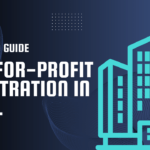
What is human resource planning?
Human resource planning in Nepal is forecasting an organization’s future human resource needs and ensuring it has the right people in the right positions at the right time. It aims to align workforce capabilities with strategic goals to maximize efficiency and productivity.
Why is human resource planning important in Nepal?
Human resource planning is crucial in Nepal to address specific challenges such as skills shortages, demographic shifts, and regulatory changes. By anticipating future workforce requirements, organizations can proactively recruit, train, and retain skilled personnel, ensuring continuity and competitiveness in the market.
Private Company Registration in Nepal
How to develop a human resource plan?
Developing a human resource plan in Nepal involves several steps: firstly, assessing current workforce capabilities and identifying future skill requirements based on business objectives. Secondly, forecasting future workforce needs considering factors like turnover, expansion plans, and technological advancements. Thirdly, devising strategies for recruitment, training, and development to fill skill gaps and ensure a competent workforce. Lastly, regularly evaluating and adjusting the plan to align with changing organizational needs and external conditions.
What are the objectives of human resource planning?
The objectives of human resource planning include ensuring adequate human resources to meet organizational goals, optimizing the utilization of human capital, identifying and addressing skill gaps, fostering career development opportunities, enhancing workforce diversity and inclusivity, and aligning HR strategies with overall business strategies to sustain long-term growth and profitability.
What factors are considered in HR planning?
In HR planning, several factors are crucially considered to ensure effective workforce management. These include current and future organizational goals and objectives, anticipated changes in the business environment such as technological advancements or regulatory shifts, demographic trends in the labor market, internal factors like turnover rates and employee performance, budget constraints affecting recruitment and training, and the organization’s strategic priorities and competitive position within the industry. By analyzing these factors, HR planners in Nepal can develop strategies to align the workforce with the company’s long-term needs and objectives.
How to forecast human resource needs in Nepal?
Forecasting human resource needs in Nepal involves several steps: firstly, analyzing historical data on employee turnover, demographics, and performance metrics. Secondly, conducting workforce trend analysis to anticipate future skill requirements based on business expansion plans, technological advancements, and market demands. Thirdly, collaborating closely with department heads and senior management to understand their staffing needs and growth projections. Lastly, using forecasting techniques like trend analysis, scenario planning, and predictive modeling to estimate future workforce needs accurately. This proactive approach helps organizations in Nepal to prepare for potential challenges and capitalize on emerging opportunities by ensuring the right talent is available at the right time.
What is the role of HR in strategic planning?
The role of HR in strategic planning in Nepal involves aligning human capital management with organizational goals to achieve sustainable growth and competitive advantage. HR professionals contribute by identifying and developing key talent, ensuring workforce diversity and inclusivity, fostering a culture of innovation and performance excellence, and designing HR policies and practices that support strategic objectives. By understanding the business environment and collaborating closely with senior management, HR plays a pivotal role in shaping strategic decisions related to workforce planning, talent acquisition, succession planning, and organizational development initiatives. This integration ensures that human resources are leveraged effectively as a strategic asset to drive business success and achieve long-term sustainability in Nepal’s competitive market.
How to assess current HR capabilities?
Assessing current HR capabilities in Nepal involves several steps: firstly, conducting a comprehensive audit of existing HR policies, procedures, and practices to evaluate their effectiveness and alignment with organizational goals. Secondly, analyzing HR metrics such as employee turnover rates, time-to-fill vacancies, training effectiveness, and performance reviews to gauge the efficiency and productivity of the workforce. Thirdly, soliciting feedback from employees and managers through surveys or focus groups to assess perceptions of HR support and services. Lastly, comparing HR capabilities against industry benchmarks and best practices to identify areas for improvement and development. By systematically assessing current HR capabilities, organizations in Nepal can implement targeted interventions to enhance HR performance and better support overall business objectives.
Can technology assist in human resource planning?
Yes, technology can significantly assist in human resource planning in Nepal. HR departments can use software and analytics tools to streamline recruitment processes, analyze workforce data for better decision-making, track employee performance and development, and forecast future HR needs more accurately. For example, HRIS (Human Resource Information System) platforms can centralize employee data, automate administrative tasks, and generate reports that facilitate strategic workforce planning. Additionally, AI-driven tools can analyze big data to identify trends and patterns in employee behavior and performance, helping HR professionals in Nepal to make informed decisions about talent acquisition, retention strategies, and skill development initiatives.
What are the challenges in human resource planning in Nepal?
Human resource planning in Nepal faces several challenges, including skills shortages and mismatches in the labor market, particularly in specialized industries and sectors. Other challenges include inadequate infrastructure and technology in rural areas, where accessing skilled talent can be difficult. Moreover, regulatory complexities and compliance requirements add another layer of challenge, necessitating HR departments to stay updated with changing labor laws and policies. Additionally, demographic shifts and the migration of skilled labor abroad pose challenges in talent retention and succession planning. Overcoming these challenges requires proactive strategies, including targeted training programs, collaboration with educational institutions, leveraging technology for remote workforce management, and adapting HR policies to local market conditions.
How to align HR planning with organizational goals?
Aligning HR planning with organizational goals in Nepal involves several key steps: firstly, understanding the organization’s strategic objectives and priorities through close collaboration with senior management. Secondly, conducting a thorough analysis of current and future workforce requirements based on business forecasts and industry trends. Thirdly, developing HR strategies and initiatives that support the achievement of these goals, such as talent acquisition plans, training and development programs, and performance management systems aligned with key performance indicators (KPIs). Lastly, continuously monitoring and evaluating HR initiatives to ensure they remain aligned with evolving organizational goals and making necessary adjustments as needed. This strategic alignment ensures that HR activities contribute directly to the overall success and sustainability of the organization in Nepal’s competitive business environment.
What are the different approaches to HR planning?
There are several approaches to HR planning that organizations in Nepal can adopt based on their specific needs and circumstances. These approaches include:
- Forecasting: Using quantitative methods to predict future HR needs based on historical data and business projections.
- Goal-oriented planning: Aligning HR strategies with organizational goals and objectives to ensure workforce capabilities meet strategic requirements.
- Scenario planning: Developing multiple HR plans to address different possible future scenarios, such as rapid growth or economic downturns.
- Succession planning: Identifying and developing internal talent to fill key roles and ensure continuity in leadership positions.
- Skills inventory: Creating a database of current employee skills and competencies to facilitate matching them with future job requirements.
- External environment analysis: Considering external factors like labor market trends, regulatory changes, and technological advancements that may impact HR planning.
How to identify skill gaps in the workforce?
Identifying skill gaps in the workforce in Nepal involves several steps: firstly, conducting a comprehensive skills assessment by reviewing job descriptions, performance evaluations, and employee feedback to identify required competencies. Secondly, comparing current employee skills against these requirements to pinpoint areas where gaps exist. Thirdly, analyzing business goals and future workforce needs to determine critical skills that will be needed. Lastly, leveraging data analytics and workforce planning tools to quantify and prioritize skill gaps.
What are the recruitment strategies in Nepal?
Recruitment strategies in Nepal encompass various approaches tailored to the local context and organizational needs. Common strategies include:
- Online Job Portals: Utilizing popular Nepali job portals to reach a wide audience of job seekers.
- Social Media Recruitment: Leveraging platforms like Facebook, LinkedIn, and Twitter for targeted recruitment campaigns.
- Referral Programs: Encouraging employee referrals to tap into their networks and attract potential candidates.
- Campus Recruitment: Partnering with universities and colleges across Nepal to recruit fresh graduates.
- Job Fairs and Events: Participating in or organizing job fairs and industry-specific events to connect with potential hires.
- Recruitment Agencies: Collaborating with reputable recruitment agencies in Nepal to source qualified candidates.
How to develop training programs based on HR planning?
Developing training programs based on HR planning in Nepal involves several key steps: firstly, conducting a thorough analysis of current and future skill requirements identified through HR planning processes. Secondly, aligning training objectives with organizational goals and strategic priorities to ensure relevance and impact. Thirdly, identifying training methods and resources that cater to diverse learning styles and preferences. Fourthly, developing a structured curriculum that addresses identified skill gaps and supports employee development. Lastly, continuously evaluating training program effectiveness through feedback, assessments, and metrics to make necessary adjustments and improvements.
Can HR planning help with succession planning?
Yes, HR planning can significantly aid succession planning in Nepal by identifying and developing internal talent to fill key roles as they become vacant. By conducting workforce assessments and talent reviews, HR departments can pinpoint employees with high potential and skills necessary for future leadership positions. Additionally, HR planning facilitates the implementation of structured development programs, mentoring initiatives, and career paths that groom successors within the organization.
What role does workforce diversity play in HR planning?
Workforce diversity plays a crucial role in HR planning in Nepal by enriching organizational perspectives, fostering innovation, and enhancing employee engagement. Embracing diversity ensures that organizations benefit from a wide range of experiences, skills, and viewpoints, which can lead to better decision-making and problem-solving. In HR planning, promoting diversity involves actively recruiting and retaining employees from diverse backgrounds, ensuring equal opportunities for career advancement, and creating an inclusive workplace culture where all employees feel valued and respected.
How to measure the effectiveness of HR planning?
Measuring the effectiveness of HR planning in Nepal involves several key metrics and evaluation methods. Firstly, assessing employee performance and productivity against set goals and targets identified in the HR plan. Secondly, monitoring turnover rates and retention rates to gauge the stability and satisfaction of the workforce. Thirdly, conducting surveys and feedback sessions with employees and managers to gather qualitative insights into the perceived effectiveness of HR initiatives and policies. Fourthly, comparing actual HR outcomes with planned objectives and making adjustments as necessary. Lastly, analyzing financial indicators such as recruitment costs, training expenditures, and overall HR budget utilization to determine the return on investment (ROI) of HR planning efforts.
What are the legal considerations in HR planning in Nepal?
Legal considerations in HR planning in Nepal encompass compliance with labor laws, regulations, and government policies that govern employment practices. Key areas of focus include recruitment and selection procedures to ensure fairness and equal opportunity, employment contracts that outline rights and responsibilities of both employers and employees, compensation and benefits packages compliant with minimum wage and social security requirements, workplace health and safety standards to protect employee welfare, and policies related to employee rights such as grievance handling and disciplinary procedures.
How to adapt HR planning to changing business environments?
Adapting HR planning to changing business environments in Nepal involves several strategic approaches. Firstly, conducting regular environmental scanning to monitor market trends, technological advancements, and competitive dynamics that may impact workforce requirements. Secondly, fostering agility within HR processes by implementing flexible policies and practices that can quickly respond to evolving business needs. Thirdly, investing in continuous learning and development programs to upskill and reskill employees in alignment with emerging industry demands. Fourthly, cultivating a culture of innovation and change management to encourage adaptability and resilience among the workforce. Lastly, leveraging technology and data analytics to forecast future HR needs accurately and make data-driven decisions that support organizational agility and growth.
Human Resource Planning in Nepal
Is there a labor law governing HR practices?
Yes, the Labor Act 2074 (2017) governs employment relationships in Nepal.
What’s the standard workweek in Nepal?
The standard workweek is 48 hours, with provisions for overtime.
Are there mandatory employee benefits in Nepal?
Mandatory benefits include annual leave, sick leave, and provident fund contributions.
Is there a minimum wage in Nepal?
Yes, Nepal has a national minimum wage, periodically revised by the government.
Are there quotas for employing local staff?
Some sectors have local employment quotas, especially for unskilled positions.







